Biodiversity
Author and Page information
- This page: http://www.globalissues.org/issue/169/biodiversity.
- To print all information e.g. expanded side notes, shows alternative links, use the print version:
8 articles on “Biodiversity” and 2 related issues:
Why Is Biodiversity Important? Who Cares?
Last updated Wednesday, November 18, 2009.
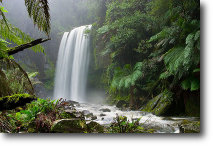 Why is Biodiversity important? Does it really matter if there aren’t so many species?
Why is Biodiversity important? Does it really matter if there aren’t so many species?Biodiversity boosts ecosystem productivity where each species, no matter how small, all have an important role to play.
For example, a larger number of plant species means a greater variety of crops; greater species diversity ensures natural sustainability for all life forms; and healthy ecosystems can better withstand and recover from a variety of disasters.
And so, while we dominate this planet, we still need to preserve the diversity in wildlife.
Read “Why Is Biodiversity Important? Who Cares?” to learn more.
Loss of Biodiversity and Extinctions
Last updated Tuesday, December 01, 2009.
 It is feared that human activity is causing massive extinctions. From various animal species, forests and the ecosystems that forests support, marine life. The costs associated with deteriorating or vanishing ecosystems will be high. However, sustainable development and consumption would help avert ecological problems.
It is feared that human activity is causing massive extinctions. From various animal species, forests and the ecosystems that forests support, marine life. The costs associated with deteriorating or vanishing ecosystems will be high. However, sustainable development and consumption would help avert ecological problems.Read “Loss of Biodiversity and Extinctions” to learn more.
Nature and Animal Conservation
Last updated Saturday, February 13, 2010.
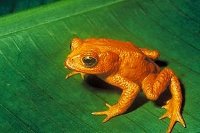 Preserving species and their habitats is important for ecosystems to self-sustain themselves.
Preserving species and their habitats is important for ecosystems to self-sustain themselves.Yet, the pressures to destroy habitat for logging, illegal hunting, and other challenges are making conservation a struggle.
Read “Nature and Animal Conservation” to learn more.
Climate Change Affects Biodiversity
Last updated Monday, February 21, 2000.
The World Resources Institute reports that there is a link between biodiversity and climate change. Rapid global warming can affect an ecosystems chances to adapt naturally. What have governments around the world been trying to do about it?Read “Climate Change Affects Biodiversity” to learn more.
Coral Reefs
Last updated Saturday, February 13, 2010.
 One type of ecosystem that perhaps is neglected more than any other is perhaps also the richest in biodiversity—the coral reefs.
One type of ecosystem that perhaps is neglected more than any other is perhaps also the richest in biodiversity—the coral reefs.Coral reefs are useful to the environment and to people in a number of ways. However, all around the world, much of the world’s marine biodiversity face threats from human and activities as well as natural. It is feared that very soon, many reefs could die off.
Read “Coral Reefs” to learn more.
Biosafety Protocol 1999
Last updated Monday, March 19, 2001.
The February 1999 Biodiversity Protocol meeting in Colombia broke down because USA, not even a signatory to the Convention on Biological Diversity, to which the protocol is meant to be part of, and five other countries of the "Miami Group" felt that their business interests were threatened. The safety concerns were unfortunately overridden by trade concerns. Some technological advances, especially in genetically engineered food, have been very fast paced and products are being pushed into the market place without having been proven safe. All over the world, concerned citizens and governments have been trying to take precautionary measures. However, 1999 was not a successful year in that respect.Read “Biosafety Protocol 1999” to learn more.
Biosafety Protocol 2000
Last updated Sunday, July 01, 2001.
A Biosafety Protocol meeting was hosted in Montreal, Canada January 24 to January 28. Compared to the fiasco of the previous year, this time, there had been a somewhat successful treaty to regulate the international transport and release of genetically modified organisms to protect natural biological diversity. However, there were a number of important and serious weaknesses too.Read “Biosafety Protocol 2000” to learn more.
Biodiversity Links for more Information
Last updated Wednesday, November 18, 2009.
Read “Biodiversity Links for more Information” to learn more.
Climate Change and Global Warming
Last updated Wednesday, December 30, 2009.
 The climate is changing. The earth is warming up, and there is now overwhelming scientific consensus that it is happening, and human-induced. With global warming on the increase and species and their habitats on the decrease, chances for ecosystems to adapt naturally are diminishing. Many are agreed that climate change may be one of the greatest threats facing the planet. Recent years show increasing temperatures in various regions, and/or increasing extremities in weather patterns.
The climate is changing. The earth is warming up, and there is now overwhelming scientific consensus that it is happening, and human-induced. With global warming on the increase and species and their habitats on the decrease, chances for ecosystems to adapt naturally are diminishing. Many are agreed that climate change may be one of the greatest threats facing the planet. Recent years show increasing temperatures in various regions, and/or increasing extremities in weather patterns.This section explores some of the effects of climate change. It also attempts to provide insights into what governments, companies, international institutions, and other organizations are attempting to do about this issue, as well as the challenges they face. Some of the major conferences in recent years are also discussed.
Read “Climate Change and Global Warming” to learn more.
Environmental Issues
Last updated Saturday, February 13, 2010.
 Environmental issues are also a major global issue. Humans depend on a sustainable and healthy environment, and yet we have damaged the environment in numerous ways. This section introduces other issues including biodiversity, climate change, animal and nature conservation, population, genetically modified food, sustainable development, and more.
Environmental issues are also a major global issue. Humans depend on a sustainable and healthy environment, and yet we have damaged the environment in numerous ways. This section introduces other issues including biodiversity, climate change, animal and nature conservation, population, genetically modified food, sustainable development, and more.Why Is Biodiversity Important? Who Cares?
At least 40 per cent of the world’s economy and 80 per cent of the needs of the poor are derived from biological resources. In addition, the richer the diversity of life, the greater the opportunity for medical discoveries, economic development, and adaptive responses to such new challenges as climate change.
— The Convention about Life on Earth, Convention on Biodiversity web site.
This web page has the following sub-sections:
Why is Biodiversity Important?
Biodiversity boosts ecosystem productivity where each species, no matter how small, all have an important role to play.For example,
- A larger number of plant species means a greater variety of crops
- Greater species diversity ensures natural sustainability for all life forms
- Healthy ecosystems can better withstand and recover from a variety of disasters.
A healthy biodiversity offers many natural services
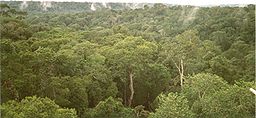
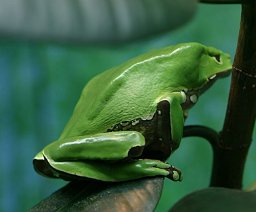
Ecosystems such as the Amazon rainforest are rich in diversity. Deforestation threatens many species such as the giant leaf frog, shown here. (Images source: Wikipedia)
- Ecosystem services, such as
- Protection of water resources
- Soils formation and protection
- Nutrient storage and recycling
- Pollution breakdown and absorption
- Contribution to climate stability
- Maintenance of ecosystems
- Recovery from unpredictable events
- Biological resources, such as
- Food
- Medicinal resources and pharmaceutical drugs
- Wood products
- Ornamental plants
- Breeding stocks, population reservoirs
- Future resources
- Diversity in genes, species and ecosystems
- Social benefits, such as
- Research, education and monitoring
- Recreation and tourism
- Cultural values
The cost of replacing these (if possible) would be extremely expensive. It therefore makes economic and development sense to move towards sustainability.
A report from Nature magazine also explains that genetic diversity helps to prevent the chances of extinction in the wild (and claims to have shown proof of this).
To prevent the well known and well documented problems of genetic defects caused by in-breeding, species need a variety of genes to ensure successful survival. Without this, the chances of extinction increases.
And as we start destroying, reducing and isolating habitats, the chances for interaction from species with a large gene pool decreases. Side Note»
Species depend on each other
While there might be “survival of the fittest” within a given species, each species depends on the services provided by other species to ensure survival. It is a type of cooperation based on mutual survival and is often what a “balanced ecosystem” refers to.Soil, bacteria, plants; the Nitrogen Cycle
The relationship between soil, plants, bacteria and other life is also referred to as the nitrogen cycle: (Image source: Wikipedia)
(Image source: Wikipedia)- Crop byproducts feed cattle
- Cattle waste feeds the soil that nourish the crops
- Crops, as well as yielding grain also yield straw
- Straw provides organic matter and fodder
- Crops are therefore food sources for humans and animals
- Soil organisms also benefit from crops
- Bacteria feed on the cellulose fibers of straw that farmers return to the soil
- Amoebas feed on bacteria making lignite fibers available for uptake by plants
- Algae provide organic matter and serve as natural nitrogen fixers
- Rodents that bore under the fields aerate the soil and improve its water-holding capacity
- Spiders, centipedes and insects grind organic matter from the surface soil and leave behind enriched droppings.
- Earthworms contribute to soil fertility
- They provide aerage, drainage and maintain soil structure.
- According to Charles Darwin, “It may be doubted whether there are many other animals which have played so important a part in the history of creatures.”
- The earthworm is like a natural tractor, fertilizer factory and dam, combined!
- Industrial-farming techniques would deprive these diverse species of food sources and instead assault them with chemicals, destroying the rich biodiversity in the soil and with it the basis for the renewal of the soil fertility.
Bees: crucial agricultural workers
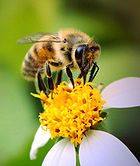
Bees are crucial for agriculture. (Images source: Wikipedia)
As reported by CNN (May 5, 2000), “One third of all our food—fruits and vegetables—would not exist without pollinators visiting flowers. But honeybees, the primary species that fertilizes food-producing plants, have suffered dramatic declines in recent years, mostly from afflictions introduced by humans.”
As German bee expert Professor Joergen Tautz from Wurzburg University adds:
Bees are vital to bio diversity. There are 130,000 plants for example for which bees are essential to pollination, from melons to pumpkins, raspberries and all kind of fruit trees — as well as animal fodder — like clover.
Bees are more important than poultry in terms of human nutrition.
— Joergen Tautz interviewed by Michael Leidig, Honey bees in US facing extinction, The Telegraph, March 14, 2007
The link and dependency between plants, bees, and human agriculture is so crucial, the two scientists writing up years of research into the problem summarized with this warning:
Humankind needs to act quickly to ensure that the ancient pact between flowers and pollinators stays intact, to safeguard our food supply and to protect our environment for generations to come. These efforts will ensure that bees continue to provide pollination and that our diets remain rich in the fruits and vegetables we now take for granted.
— Diana Cox-Foster and Dennis van Engelsdorp, Solving the Mystery of the Vanishing Bees, Scientific American, April 2009
Interdependent marine ecosystem
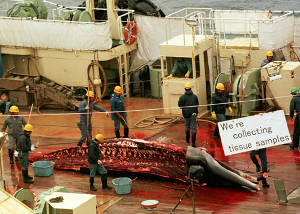
Whaling is often controversial. (Image source: © Greenpeace)
It noted how a few decades ago, some fishermen campaigned for killing whales because they were threatening the fish supply and thus jobs.
A chain of events eventually came full circle and led to a loss of jobs:
- The massive reduction in the local whale population meant killer whales in the region (usually preying on younger whales) moved to other animals such as seals;
- As seal numbers declined, the killer whales targeted otters;
- As otter numbers were decimated, the urchins and other targets of otters flourished;
- These decimated the kelp forests where many fish larvae grew in relative protection;
- The exposed fish larvae were easy pickings for a variety of sea life;
- Fishermen’s livelihoods were destroyed.
Interdependency vs Human Intervention
But nature can often be surprisingly resilient, often without the need for human interventions. For example, a documentary aired on the BBC (I unfortunately forget the name and date, but in the 1990s) described two national parks in Africa where elephant populations had grown quite large within those artificial boundaries. The usual way to deal with this was to cull the population to try and keep the ecosystem in balance. Without this, elephants were stripping vegetation bare, affecting other animals, too.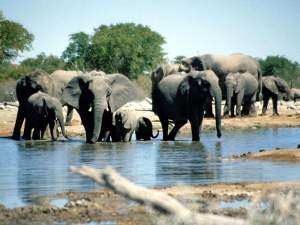
(Image source: Wikipedia)
A few years later, they found the park with the culled population had remained in poor condition. The park where things were left alone has naturally regenerated; the large elephant populations eventually reduced in number as they undermined their own resource base. The natural pace at which this happened allowed vegetation to grow back. Other wildlife grew in numbers and the ecosystem was generally back in balance.
Biodiversity providing lessons for scientists in engineering
For a number of years now, scientists have been looking more and more at nature to see how various species work, produce, consume resources, trying to mimic the amazing feats that millions of years of evolution has produced.As just one small example, some spiders can produce their silk with a higher tensile strength than many alloys of steel even though it is made of proteins. So biologists are looking at these processes in more depth to see if they can reproduce or enhance such capabilities.
More important than human use or biological interest
Many people may support environmental causes to help preserve the “beauty” of Nature. However, that is in a strange way, not really a justifiable excuse as it is a subjective, human or anthropomorphasized view.For many decades, various environmentalists, biologists and other scientists, have viewed the entire earth as a massive living organism or system due to the interdependent nature of all species within it. Some cultures have recognized this kind of inter-relationship for a very long time. Some have termed this Gaia.
While there are disagreements and differences on how this works, it suggests that ecological balance and biodiversity are crucial for all of earth, not just humans.
Putting an economic value on biodiversity
It was noted earlier that ecosystems provide many services to us, for free.The Economics of Ecosystems and Biodiversity (TEEB) is an organization — backed by the UN and various European governments — attempting to compile, build and make a compelling economics case for the conservation of ecosystems and biodiversity.
In a recent report, The Economics of Ecosystems and Biodiversity for National and International Policy Makers 2009, TEEB provided the following example of sectors dependent on genetic resources:
| Sector | Size of Market | Comment |
|---|---|---|
| The Economics of Ecosystems and Biodiversity for National and International Policy Makers 2009 | ||
| Pharmaceutical | US$ 640 bn. (2006) | 25-50% derived from genetic resources |
| Biotechnology | US$ 70 bn. (2006) from public companies alone | Many products derived from genetic resources (enzymes, microorganisms) |
| Agricultural seeds | US$ 30 bn. (2006) | All derived from genetic resources |
| Personal care, Botanical and food & Beverage industries | US$ 22 bn. (2006) for herbal supplements US$ 12 bn. (2006) for personal care US$ 31 bn. (2006) for food products | Some products derived from genetic resources. represents ‘natural’ component of the market. |
The economic benefits of protecting the environment are well-understood, even if seemingly rarely practiced:
Numerous studies also show that investments in protected areas generate a cost-benefit ratio of one to 25 and even one to 100 in some cases, [Pavan Sukhdev, from TEEB] said. Planting and protecting nearly 12,000 hectares of mangroves in Vietnam costs just over a million dollars but saved annual expenditures on dyke maintenance of well over seven million dollars.
— Stephen Leahy, Environment: Save At Least Half the Planet, or Lose It All, Inter Press Service, November 17, 2009
Economists talk of the price signal that is fundamental to capitalism; the ability for prices to indicate when a resource is becoming scarcer. At such a time, markets mobilize automatically to address this by looking for ways to bring down costs. As a result, resources are supposedly infinite. For example, if energy costs go up, businesses will look for a way to minimize such costs for themselves, and it is in such a time that alternatives come about and/or existing resources last longer because they are used more efficiently. “Running out of resources” should therefore be averted.
However, it has long been argued that prices don’t truly reflect the full cost of things, so either the signal is incorrect, or comes too late. The price signal also implies the poorest often pay the heaviest costs. For example, commercially over-fishing a region may mean fish from that area becomes harder to catch and more expensive, possibly allowing that ecosystem time to recover (though that is not guaranteed, either). However, while commercial entities can exploit resources elsewhere, local fishermen will go out of business and the poorer will likely go hungry (as also detailed on this site’s section on biodiversity). This then has an impact on various local social, political and economic issues.
In addition to that, other related measurements, such as GNP are therefore flawed, and even reward unproductive or inefficient behavior (e.g. “Efficiently” producing unhealthy food — and the unhealthy consumer culture to go with it — may profit the food industry and a private health sector that has to deal with it, all of which require more use of resources. More examples are discussed on this site’s section on consumption and consumerism).
Our continued inefficient pumping of greenhouse gases into the environment without factoring the enormous cost as the climate already begins to change is perhaps an example where price signals may come too late, or at a time when there is already significant impact to many people. Resources that could be available more indefinitely, become finite because of our inability or unwillingness to change.
Markets fail to capture most ecosystem service values. Existing price signals only reflect - at best - the share of total value that relates to provisioning services like food, fuel or water and their prices may be distorted. Even these services often bypass markets where carried out as part of community management of shared resources. The values of other ecosystem services are generally not reflected in markets apart from a few exceptions (such as tourism).
This is mainly explained by the fact that many ecosystem services are ‘public goods’ or ‘common goods’: they are often open access in character and non-rival in their consumption. In addition, their benefits are felt differently by people in different places and over different timescales. Private and public decisions affecting biodiversity rarely consider benefits beyond the immediate geographical area…. They can also overlook local public benefits … in favor of private benefits …, even when local livelihoods are at stake, or focus on short-term gains to the detriment of the sustained supply of benefits over time….
Benefits that are felt with a long-term horizon (e.g. from climate regulation) are frequently ignored. This systematic under-valuation of ecosystem services and failure to capture the values is one of the main causes underlying today’s biodiversity crisis. Values that are not overtly part of a financial equation are too often ignored.
— The Economics of Ecosystems and Biodiversity for National and International Policy Makers 2009  , p.10 (Emphasis original)
, p.10 (Emphasis original)
Think of some of the effects this could have:
- Some industrial meat production, which is very harmful for the environment, may become more expensive
- For example, as mentioned in the previous link, if water used by the meat industry in the United States were not subsidized by taxpayers, common hamburger meat would cost $35 a pound.
- Instead of regulation to change people’s habits, markets would automatically reflect these true costs; consumers can then make better informed choices about what to consume, e.g. by reducing their meat consumption or demand more ecologically sustainable alternatives at reasonable cost.
- A reduction in meat production could protect forests or help reduce clearance of forests for cattle ranches, which would have a knock-on benefit for climate change concerns.
- Appropriate investment in renewable energy could threaten the fossil fuel industry though they are trying to adapt to that (perhaps slowly, and after initial resistance). But at the same time, governments that are able to use renewable sources are less likely to find themselves spending so many resources in geopolitical areas (e.g. politics, military, terrorist response to Western presence in Middle East, etc) to protect or secure access to fossil fuels.
- “Cradle to cradle” type of design — where products are designed to be produced and recycled or disposed of more sustainably — could considerably reduce costs for producers and consumers alike, and possibly reduce stress on associated ecosystems.
- Land that is used to produce unhealthy or marginally nutritious items (e.g. tobacco, sugar, possibly tea and coffee) could be used for more useful or healthier alternatives, possibly even helping address obesity and other issues. (For example, while factoring in environmental costs could make healthy produce more expensive too, expanding production of healthier foods could help contain costs rises to some extent.)
- etc.
Naturally, those who benefit from the current system may be hostile to such changes, especially if it may mean they might lose out.
This is a clear case of inter-related issues: the health of the environment is strongly tried to our economic choices (i.e. how we use resources), but addressing core short-comings in our economic systems is a crucial political challenge.
http://www.globalissues.org/article/170/why-is-biodiversity-important-who-cares
Endangered species
From Wikipedia, the free encyclopedia
For other uses, see Endangered species (disambiguation).
"Endangered" redirects here. For other uses, see Endangered (disambiguation).
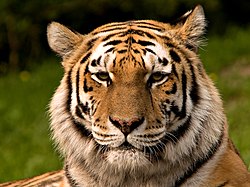
The Siberian Tiger is a subspecies of tiger that is endangered; three subspecies of tiger are already extinct.[1]
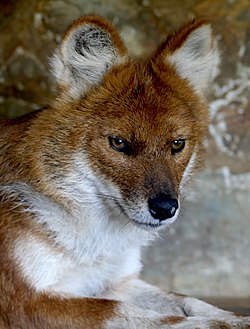
The most endangered asiatic top predator, the dhole is on the edge of extinction.
Causes of Endangerment
Habitat Destruction Introduction of Exotic Species
When discussing the causes of endangerment, it is important to understand that individual species are not the only factors involved in this dilemma. Endangerment is a broad issue, one that involves the habitats and environments where species live and interact with one another. Although some measures are being taken to help specific cases of endangerment, the universal problem cannot be solved until humans protect the natural environments where endangered species dwell.
There are many reasons why a particular species may become endangered. Although these factors can be analyzed and grouped, there are many causes that appear repeatedly. Below are several factors leading to endangerment:
Our planet is continually changing, causing habitats to be altered and modified. Natural changes tend to occur at a gradual pace, usually causing only a slight impact on individual species. However, when changes occur at a fast pace, there is little or no time for individual species to react and adjust to new circumstances. This can create disastrous results, and for this reason, rapid habitat loss is the primary cause of species endangerment. The strongest forces in rapid habitat loss are human beings. Nearly every region of the earth has been affected by human activity, particularly during this past century. The loss of microbes in soils that formerly supported tropical forests, the extinction of fish and various aquatic species in polluted habitats, and changes in global climate brought about by the release of greenhouse gases are all results of human activity.
It can be difficult for an individual to recognize the effects that humans have had on specific species. It is hard to identify or predict human effects on individual species and habitats, especially during a human lifetime. But it is quite apparent that human activity has greatly contributed to species endangerment. For example, although tropical forests may look as though they are lush, they are actually highly susceptible to destruction. This is because the soils in which they grow are lacking in nutrients. It may take Centuries to re-grow a forest that was cut down by humans or destroyed by fire, and many of the world's severely threatened animals and plants live in these forests. If the current rate of forest loss continues, huge quantities of plant and animal species will disappear.
Native species are those plants and animals that are part of a specific geographic area, and have ordinarily been a part of that particular biological landscape for a lengthy period of time. They are well adapted to their local environment and are accustomed to the presence of other native species within the same general habitat. Exotic species, however, are interlopers. These species are introduced into new environments by way of human activities, either intentionally or accidentally. These interlopers are viewed by the native species as foreign elements. They may cause no obvious problems and may eventual be considered as natural as any native species in the habitat. However, exotic species may also seriously disrupt delicate ecological balances and may produce a plethora of unintended yet harmful consequences.
The worst of these unintended yet harmful consequences arise when introduced exotic species put native species in jeopardy by preying on them. This can alter the natural habitat and can cause a greater competition for food. Species have been biologically introduced to environments all over the world, and the most destructive effects have occurred on islands. Introduced insects, rats, pigs, cats, and other foreign species have actually caused the endangerment and extinction of hundreds of species during the past five centuries. Exotic species are certainly a factor leading to endangerment.
A species that faces overexploitation is one that may become severely endangered or even extinct due to the rate in which the species is being used. Unrestricted whaling during the 20th century is an example of overexploitation, and the whaling industry brought many species of whales to extremely low population sizes. When several whale species were nearly extinct, a number of nations (including the United States) agreed to abide by an international moratorium on whaling. Due to this moratorium, some whale species, such as the grey whale, have made remarkable comebacks, while others remain threatened or endangered.
Due to the trade in animal parts, many species continue to suffer high rates of exploitation. Even today, there are demands for items such as rhino horns and tiger bones in several areas of Asia. It is here that there exists a strong market for traditional medicines made from these animal parts.
Disease, pollution, and limited distribution are more factors that threaten various plant and animal species. If a species does not have the natural genetic protection against particular pathogens, an introduced disease can have severe effects on that specie. For example, rabies and canine distemper viruses are presently destroying carnivore populations in East Africa. Domestic animals often transmit the diseases that affect wild populations, demonstrating again how human activities lie at the root of most causes of endangerment. Pollution has seriously affected multiple terrestrial and aquatic species, and limited distributions are frequently a consequence of other threats; populations confined to few small areas due to of habitat loss, for example, may be disastrously affected by random factors.
threatened species are any species (including animals, plants, fungi, etc.) which are vulnerable to extinction in the near future. World Conservation Union (IUCN) is the foremost authority on threatened species, and treats threatened species not as a single category, but as a group of three categories: vulnerable, endangered, and critically endangered, depending on the degree to which they are threatened.
Species that are threatened are sometimes characterised by the population dynamics measure of critical depensation, a mathematical measure of biomass related to population growth rate. This quantitative metric is one method of evaluating the degree of endangerment.Less-than-threatened categories are Near Threatened, Least Concern, and the no longer assigned category of Conservation Dependent. Species which have not been evaluated (NE), or do not have sufficient data (Data Deficient) also are not considered "threatened" by the IUCN.
Although threatened and vulnerable may be used interchangeably when discussing IUCN categories, the term threatened is generally used to refer to the three categories (critically endangered, endangered and vulnerable), while vulnerable is used to refer to the least at risk of those three categories. They may be used interchangeably in most contexts however, as all vulnerable species are threatened species (vulnerable is a category of threatened species); and, as the more at-risk categories of threatened species (namely endangered and critically endangered) must, by definition, also qualify as vulnerable species, all threatened species may also be considered vulnerable.
Threatened species are also referred to as a red-listed species, as they are listed in the IUCN Red List of Threatened Species.





No comments:
Post a Comment